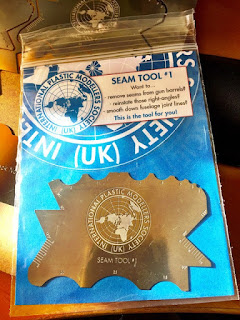Prior to this photograph being taken, I have given the whole model a light wash of Galleria Matt Varnish mixed some highly diluted Citadel Sepia Wash to add some subtle weathering.
The model is mounted on to a 50mm x 50mm acrylic base (bought via e-bay) with the upright pole being made from a clear plastic cocktail stick/cocktail stirrer. The pole is 120mm tall and mounted to the base and the SE5a with short sections of plastic rod and superglue.
I am still thinking about adding a clear plastic disc to the front of the engine to mimic a turning propeller, but for now I am pleased to say that the SE5a is finished.
Tony































